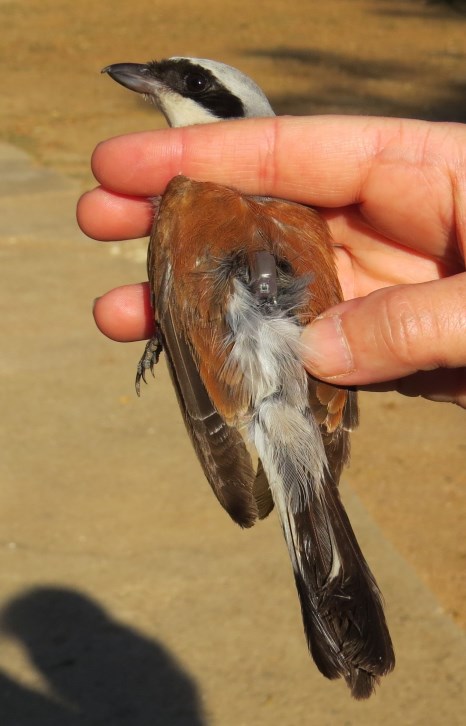In the end of November 2017 our team started the next stage of research on the arrival of Palearctic migrating birds at their wintering sites in South Africa. BMRS members – dr Magdalena Remisiewicz and Michał Redlisiak – are supported by two post-doc fellows in Animal Demography Unit, dr Artur Goławski and dr Zbigniew Kasprzykowski (both from Siedlce University of Natural Sciences and Humanities, Poland), as well as Jacqui Badenhorst (Magda’s PhD student) with her husband Dick Badenhorst and the rangers in Barberspan Nature Reserve – Andrew Mvundle, Lebo Moeti and Amos Koloti.
The expedition started with a short reconnaissance to two nature reserves in Mpumalanga province: Telperion and Dinokeng, which proved that first Spotted Flycatchers, Red-backed Shrikes and Lesser Grey Shrikes had already arrived. Singing Willow Warblers were also heard. The main study site of the expedition is Barberspan Nature Reserve, where we started the fieldwork on 27th November. We found single individuals of our key species and the first ringed bird was a Common Whitethroat, which is a rarity here. After the first night rains many more migrants appeared. Among them was a Red-backed Shrike male, ringed a year ago by other members of our team: dr Jarosław Nowakowski and Krzysztof Stępniewski. We trapped this bird in the same clump of bushes as in the previous year! He received a geolocator and we hope that next year it will once again exhibit site fidelity and come back to Barberspan – this time with the location of its breeding grounds recorded. Maybe it comes from Omsk in Siberia, where our Station did some research as well, or maybe from Sieldce, which is Artur’s study site? We are waiting impatiently for the Spotted Flycatchers and Red-backed Shrikes that received geolocators during our previous expeditions, hoping to retrieve at least some of them. More and more birds arrive every day and occupy their favourite bushes by the management office of the reserve. For the next two weeks we are going to monitor their arrivals and the relationship between their timing and the weather including rainfalls. We also plan another training in the Telperion Nature Reserve.
The expedition was prepared in collaboration with Animal Demography Unit, University of Cape Town, South Africa, as a part of the project: Building an Early Warning System for Biodiversity in the Face of Climate Change” (BEW), co-funded by the National Centre for Research and Development (Poland) and National Research Foundation (RSA) within the program of Polish-South African collaboration.




